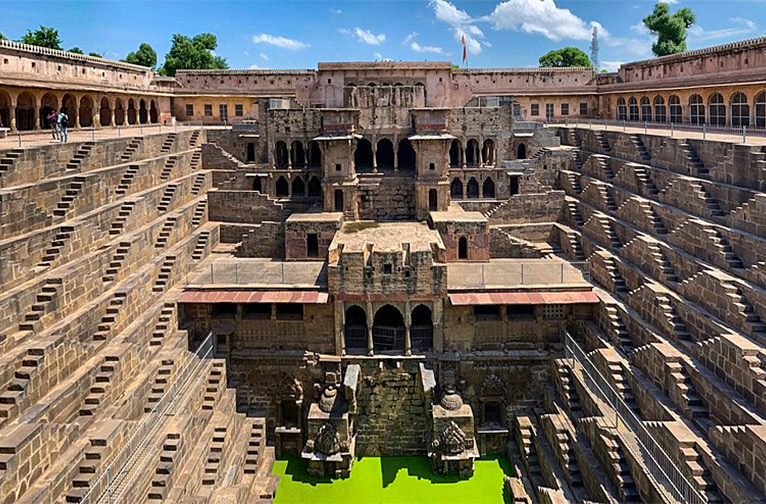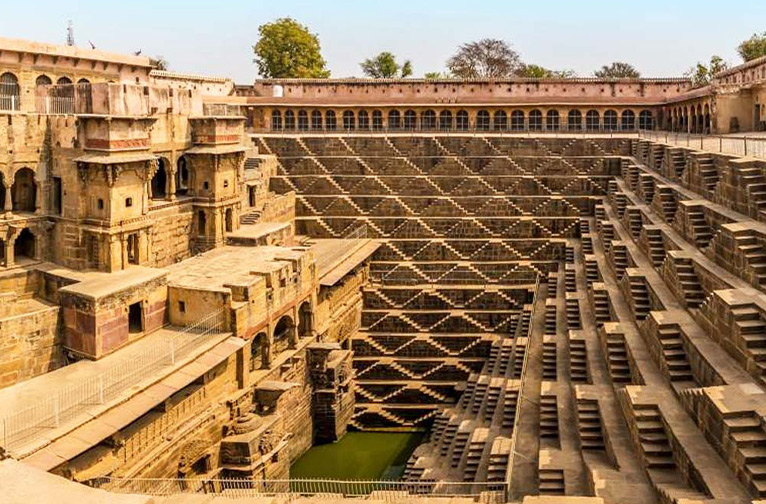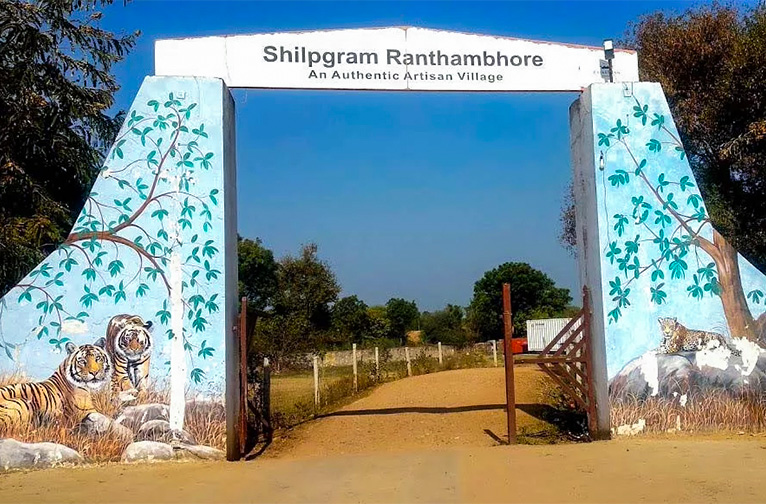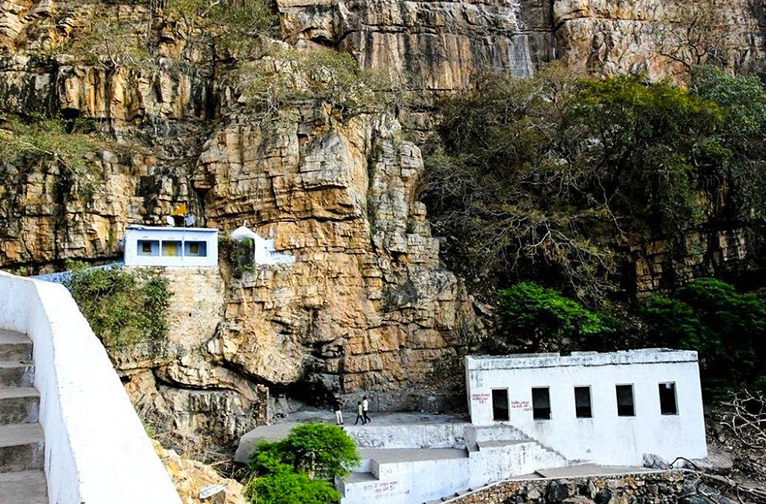Travellers on road trips along the Golden Triangle of Delhi–Jaipur–Agra should definitely plan to include the beautiful Ranthambore National Park for a unique tiger-spotting experience. It is one of the world’s top destinations for viewing the Royal Bengal Tiger.
The legendary park, which also provides excellent opportunities for birdwatching and discoveries of crocodiles in the wild, is easily accessible from Jaipur and Agra—and Delhi as well.
That said, now let’s talk about some of the unique experiences in store for travellers as they journey to the game park from Agra and Jaipur. Both cities have lovely detours along the way, which are sure to amplify the entire wildlife experience on several counts.
As you head out from Jaipur, a stopover at the village of Abhaneri in Rajasthan’s Dausa District is well recommended. This rural spot is home to one of the world's most spectacular stepwells, also known as a baori in the vernacular.
An architectural marvel, Chand Baori dates back between the 9th and 10th centuries. This lesser-visited gem of local water harvesting systems was built by Raja Chanda of the Chauhan dynasty. For centuries, baoris have served as one of the most critical water resources in the state of Rajasthan—a hot desert land that faces blistering summers and water scarcity in many parts. On your travels around the state, you would have come across many such water harvesting systems. As lifesaving sources, stepwells are imbued with sacred significance and many a time marked as engineering and architectural marvels. The one at Abhaneri is significant for both these features.


Chand Baori is believed to be one of the oldest serving stepwells in India and very much a living heritage for the local community. Its unique inverted pyramid-style structure on three sides features stairways of a total of 3,500 steps flowing down 13 stories deep to access the water from the huge reservoir at the bottom. Dropping down to several levels, pillared corridors run along the fourth side of the structure. Do take note of the unusual diamond-setting geometry of the cascading steps and the stunning image of Vishnu reclining on the serpent Ananta. Close by, the 1,000-year-old Harshat Temple, partially in ruins, attracts devotees all year round. To put the spotlight on this exquisite water resource, the state government now hosts an annual festival to showcase Rajasthani heritage and culture.
Ranthambore from Agra is about 300 km away, and it takes about 5–6 hours to get there. The entry point to the game park is the historic city of Sawai Madhopur, having served as the base for rulers from the days of the Chauhans to the Mughals. Back in 1765, the city was formally planned in the Jaipur-grid style by Maharaja Sawai Madho Singh Ji I and is now also the district headquarters of Sawai Madhopur. The city also came into prominence again as the gateway to the game park and the introduction of the rail link between Jaipur and Sawai Madhopur by Maharaja Sawai Man Singh in the days of the Raj.
It is reputed for its crafting traditions including that of handmade copper and brass vessels, lacquered woodwork, papier-mâché works, circular playing cards which remind you of the Mughal-inspired Ganjifa cards, and an extract of khas-khas grass.
Devotees of Lord Ganesha from Sawai Madhopur are joined by streams of pilgrims from far and near to pay their respects at the Trinetra Ganesh Temple, in the 10th-century Ranthambore Fort, just 12 km away. Built by Raja Hammir Dev, it is believed to be one of the oldest shrines dedicated to the Elephant God in the country; it is unique for featuring the deity together with his entire family, which was arranged by the Raja in the year 1300. This includes his wives, Ridhi and Sidhi, and their sons, Subh and Labh. The shrine holds five beautiful aartis through the day.
A unique tradition is the thousands of letters, petitions, wedding invitation cards, thanksgiving letters, etc., sent by devotees to the deity, which are read out to him by the priests. This is in the belief that Ganesha, the remover of all obstacles, will respond to these wishes of his faithful followers and bring them good luck and fortune. The Ganesh Chaturthi festival held each year is a grand affair.
The foundation stone of the Rajiv Gandhi Regional Museum of Natural History in Sawai Madhopur was laid in 2007 by the then Vice-President of India, M. Hamid Ansari. The inspiration behind the museum was to provide the public an informal centre for environmental education and creation of public awareness on conservation of nature and natural resources. The museum falls under the Ministry of Environment, Forest & Climate Change, Govt. of India.
In 2014, it threw open the doors to the general public with galleries on “Biodiversity of Rajasthan”, “Biodiversity of Western Ghats”, “Flora & Fauna of Ranthambore Tiger Reserve”, and a corridor for general fauna of the country along with a library, an eco-theatre, and an auditorium. Today, it also features several new thematic galleries and exhibitions including those such as “Bird Diversity in Rajasthan”, “Adaptation in Desert Flora and Fauna”, “Creativity on Nature by Younger Generation”, “Mammalian Series”, “Textiles of India”, “Heritage Sites of India”, “Seeds of India”, “Tribes of India”, “Water Conservation”, “Plastic Pollution” and “Scientific Illustrations of Biological Specimens” to enhance the knowledge of the visitors. The museum attracts over 2,000 visitors from home and abroad in a month. It serves as a platform to local artists to display paintings of wildlife in different mediums in a dedicated gallery.
Dastkar Ranthambore was launched with the aim to resettle the people with the forming of Ranthambore National Park. While the non-profit organisation helped them to relocate, it also backed up its support by helping these communities to find alternative sources of income by tapping into their native traditions of art and crafts, etc. This has played a pivotal role in providing them a lifeline for a more favourable existence, as much as serving as an impetus to revive dying artisanal pursuits such as pottery, leather artefacts, tie & dye, block printing, patchwork, etc. The organization furthers its efforts by upskilling them for contemporary trends to reach a global market. From handcrafted accessories to patchwork, block printing, and recycled fabric, the choice of items available at the centre is varied and highly appealing. The wild denizens of the game park serve as a significant theme for these inspired items. The focus on sustainable practices is further heightened with the introduction of a recently established effluent treatment plant and solar energy power generating systems.


Shilpgram offers a unique experience of the rural arts and crafts, showcasing the lifestyle of the folk and tribal communities of India’s western region. You will get to see the variety of traditional architectural features of various geographical regions and ethnic groups in the five states of India’s western region. To make the whole thing lots of fun for kids as well, it organizes workshops on arts, crafts, theatre, and music.
Enroute to Ranthambore, you can make a short detour to the Amareshwar Mahadev Temple in the hills. Dedicated to Lord Shiva, its verdant location makes it a popular picnic spot as well for the locals at Sawai Madhopur, which is 6 km away. Close to the shrine is the much-visited Sri Sita Ram Ji Temple.
You will love this deep dive into Ranthambore, which goes far beyond tiger trails, talabs, and fort visits.
You will love this deep dive into Ranthambhore which goes far beyond tiger trails, talabs and fort visits.